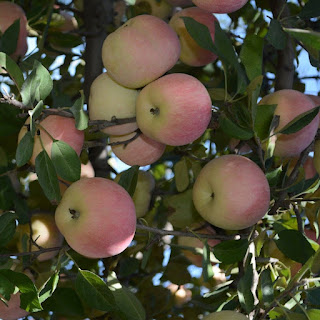Peppers ( Green Chilii )
Peppers a Species of capsicum
Chilii
Green Chilii
Pepper
Bell pepper
Cherry pepper
Botanical Name
Capsicum annuum
Information
The peppers is a plant that produces bright red pepper vegetables. This chili pepper is commonly used for cooking in places such as the Southern U.S. and Central America. Most are moderately spicy, though because there are so many variants, the spice level can vary dramatically. Cayenne powder is also a popular seasoning product made from peppers plants.
Tips from Garden Coaches
Plants of the Capsicum genus are grown widely all over the world. They thrive in both gardens and flowerpots and are easy to care for.
Name Story
Cayenne pepper
Perhaps a common thing that comes to mind when hearing "Cayenne" is a luxury car, but the Cayenne pepper that is often mentioned in conversations is not the pepper of luxury car brands. The "Cayenne" mentioned here comes from its origin, the Cayenne region of French Guiana.
Red pepper, Green pepper, Bell pepper, Chili pepper
Capsicum annuum can be called different names, generally based on its taste and size. Larger and sweeter peppers are called red peppers, green peppers or bell peppers, while smaller and hotter peppers are called chili peppers.
Interesting Facts
Do you know why pepperss are spicy? First, we need to understand the basic biology of capsaicin, which was originally used as an antifungal agent to protect plants, but it has a new role due to man's discovery. Capsaicin activates certain neurons responsible for pain. Whether the cells are stimulated by hot peppers or by real burning, these special neurons indiscriminately transmit information to the brain. The hot feeling is both exciting and frightening.
Symbolism
Enthusiasm, healing, cleansing, desire
Characteristics
Plant Type
Grass
Lifespan
Annual, Perennial, Biennial
Bloom Time
Late spring, Summer
Plant Height
8 to 39 inches
Spread
6 to 12 inches
Flower Size
0.4 to 0.8 inch
Habitat
Rivers, thickets, groves
Flower Color
White
Leaf Color
GreenPurple
Fruit Color
YellowRedBlackOrangeGreenBurgundyPurpleGoldWhite
Stem Color
Green
Conditions Requirement
Difficulty Rating
Peppers is not difficult to take care of. With proper care, your Peppers will grow well under certain environments.
Sunlight
Full sun, Partial sun
All you need to know about Full-sun
Hardiness
30 ℉
Hardiness Zones
10 to 11
Soil
Sand, Loam, Clay, Acidic, Neutral, Alkaline
Care Guide
Water
Peppers need regular and frequent watering throughout their entire growth cycle. The best way to keep them well-watered is by using drip irrigation. If you're growing them in containers, water thoroughly when a top few inches of soil becomes dry. Make sure the soil does not become waterlogged by providing good drainage.
Fertilization
Fertilization once every 2-3 months during the growing season.
Pruning
Trim the dead, diseased, overgrown branches in winter.
Planting Time
Spring
Harvest Time
Summer, Fall
Propagation
Sowing
Potting Suggestions
Needs excellent drainage in pots.
Pests and Diseases
Rot; grass house red spider mite, aphids
Scientific classification
Genus
Capsicum - Capsicum
Family
Solanaceae - Nightshade, Solanaceous plants, Potato
Order
Solanales - Nightshades, bindweeds, gooseweeds, and allies
Class
Magnoliopsida - Dicotyledons, Dicots, Eudicots
Phylum
Tracheophyta - Vascular plants, Seed plants, Ferns, Tracheophytes.
Uses
Garden Use
The many cultivars of peppers are commonly grown by veggie gardeners as annuals in warmer climates to use in their home kitchens and add a bit of color to their garden. However, peppers plants are sometimes planted in their own area in vegetable gardens, as it can easily outcompete other plants with its prolific seeds; but herbs and other veggies like tomatoes can be solid companions.




Comments
Post a Comment